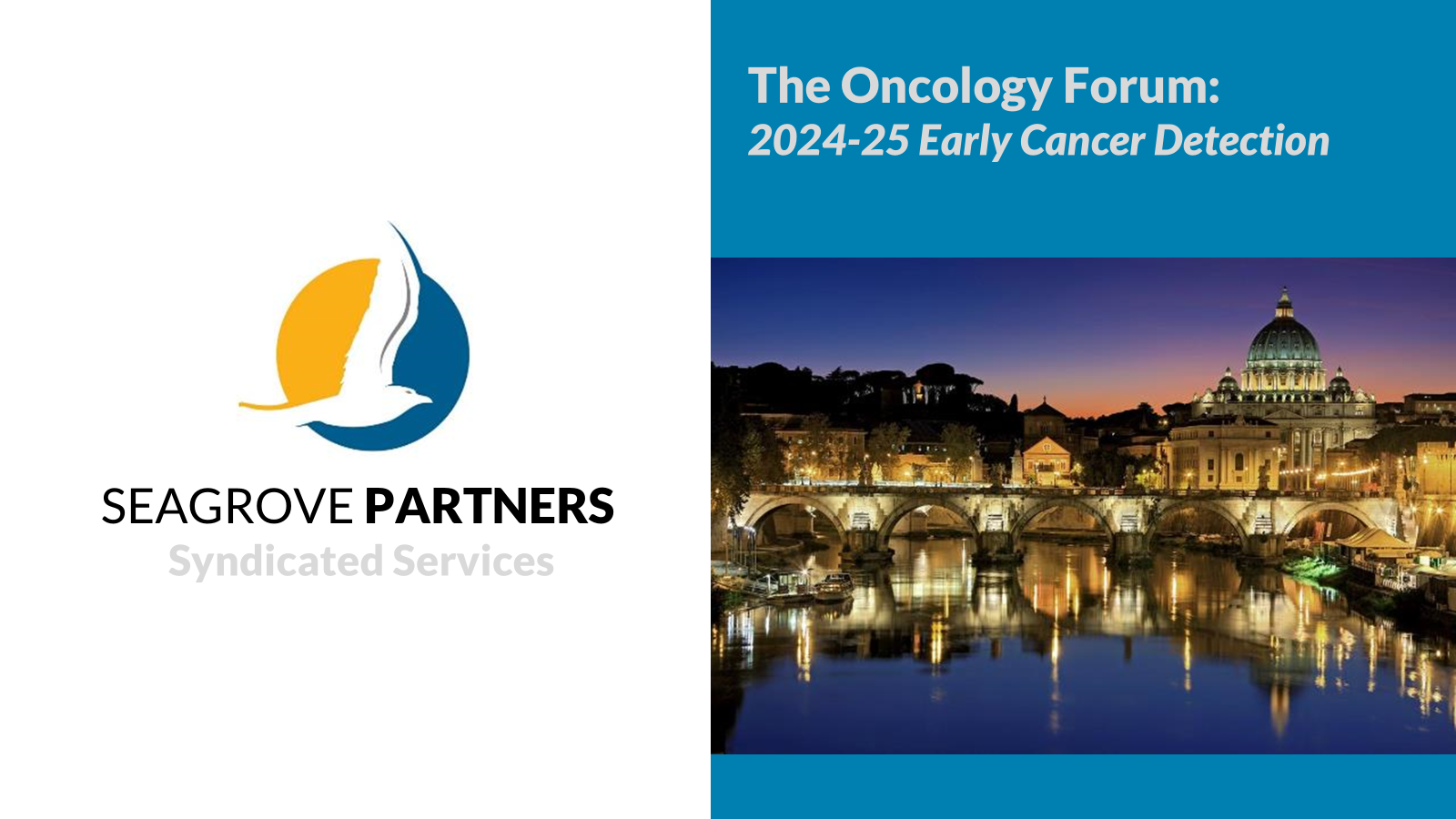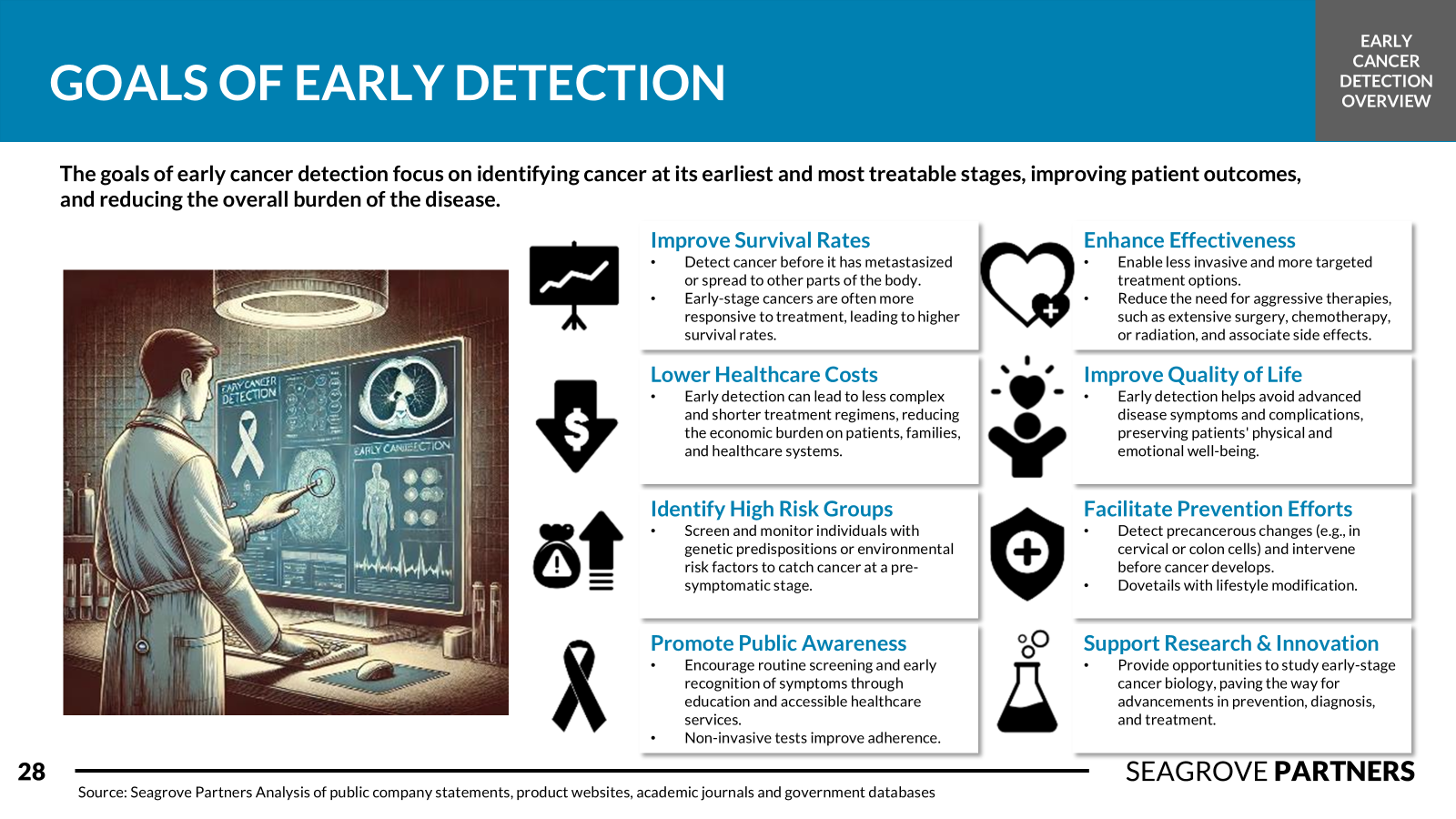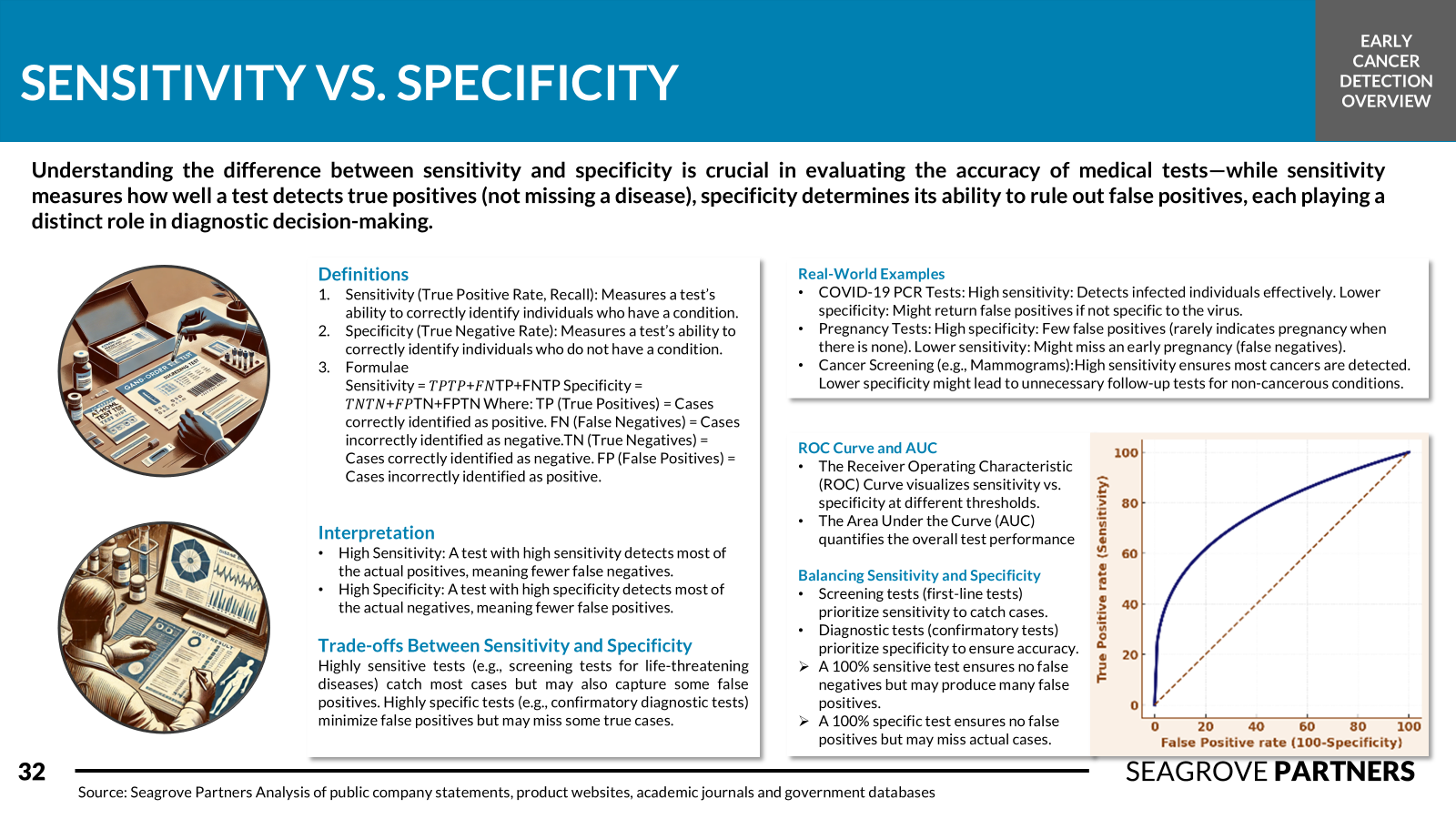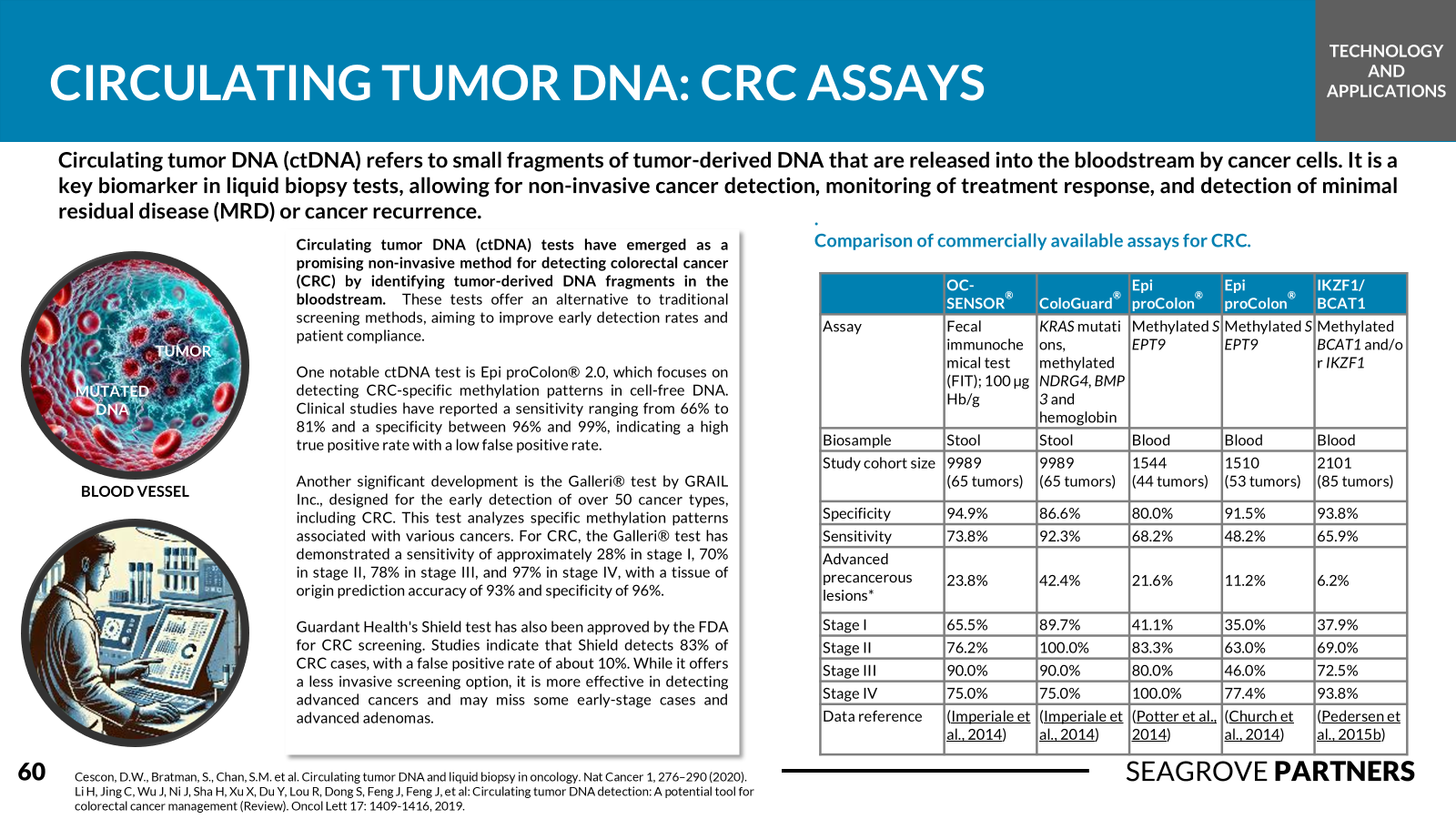2024-25 Early Cancer Detection Primer
Cancer is one of the leading causes of mortality worldwide, with early detection playing a crucial role in improving patient outcomes and survival rates. Advances in diagnostic technologies, liquid biopsies, and artificial intelligence (AI) are transforming the landscape of early cancer detection, making it more precise, accessible, and cost-effective. As healthcare systems continue shifting towards proactive screening and personalized medicine, understanding the market dynamics, technological advancements, regulatory landscape, and economic impact of early cancer detection remains essential. This report provides a comprehensive analysis of the field, highlighting the latest trends, challenges, and future directions in cancer screening and diagnostics.
The first section of this report analyzes oncology market statistics, covering key aspects such as epidemiology trends across various tumor types, disease burden, and spending patterns. A detailed review of drug approvals by tumor type, along with a timeline of major regulatory approvals, highlights the progress in precision oncology and targeted therapies. Additionally, this section maps key cancer research centers and institutions that lead innovation in early detection and treatment. The role of major oncology conferences, such as ASCO, ESMO, and AACR, in shaping industry advancements and fostering collaboration is also highlighted.
The second section explores the foundations of early cancer detection, covering its history, definitions, clinical utility, and challenges. The evolution of cancer screening from traditional methods like mammography and colonoscopy to cutting-edge genomic and molecular approaches is examined. Key distinctions between screening, early diagnosis, and risk stratification are highlighted, along with an assessment of barriers such as false positives, overdiagnosis, and disparities in access to screening programs. Additionally, regulatory considerations, including FDA approvals, reimbursement policies, and clinical trial requirements, are analyzed to provide insights into commercialization.
The third section focuses on key players in the industry, profiling leading companies such as Guardant Health, Exact Sciences, and GRAIL. These companies lead early cancer detection innovations, pioneering novel approaches like circulating tumor DNA (ctDNA) assays, methylation-based tests, and next-generation sequencing (NGS). Each company’s business model, product pipeline, strategic partnerships, and competitive positioning are discussed to provide a detailed understanding of the industry's innovation landscape.
Finally, the fourth section explores the technologies and applications driving early cancer detection. Emerging diagnostic tools—including liquid biopsies, imaging advancements, proteomics, and AI-driven analytics—are revolutionizing how cancer is identified in asymptomatic patients. The role of machine learning algorithms in improving sensitivity and specificity, as well as the integration of multi-omics data for more comprehensive risk assessments, is evaluated. Case studies illustrate real-world applications of these technologies, demonstrating how they reshape clinical decision-making and patient care. By analyzing the intersection of technology, clinical need, and market forces, this report provides a holistic view of the evolving landscape of early cancer detection and its implications for the future of oncology.
Cancer is one of the leading causes of mortality worldwide, with early detection playing a crucial role in improving patient outcomes and survival rates. Advances in diagnostic technologies, liquid biopsies, and artificial intelligence (AI) are transforming the landscape of early cancer detection, making it more precise, accessible, and cost-effective. As healthcare systems continue shifting towards proactive screening and personalized medicine, understanding the market dynamics, technological advancements, regulatory landscape, and economic impact of early cancer detection remains essential. This report provides a comprehensive analysis of the field, highlighting the latest trends, challenges, and future directions in cancer screening and diagnostics.
The first section of this report analyzes oncology market statistics, covering key aspects such as epidemiology trends across various tumor types, disease burden, and spending patterns. A detailed review of drug approvals by tumor type, along with a timeline of major regulatory approvals, highlights the progress in precision oncology and targeted therapies. Additionally, this section maps key cancer research centers and institutions that lead innovation in early detection and treatment. The role of major oncology conferences, such as ASCO, ESMO, and AACR, in shaping industry advancements and fostering collaboration is also highlighted.
The second section explores the foundations of early cancer detection, covering its history, definitions, clinical utility, and challenges. The evolution of cancer screening from traditional methods like mammography and colonoscopy to cutting-edge genomic and molecular approaches is examined. Key distinctions between screening, early diagnosis, and risk stratification are highlighted, along with an assessment of barriers such as false positives, overdiagnosis, and disparities in access to screening programs. Additionally, regulatory considerations, including FDA approvals, reimbursement policies, and clinical trial requirements, are analyzed to provide insights into commercialization.
The third section focuses on key players in the industry, profiling leading companies such as Guardant Health, Exact Sciences, and GRAIL. These companies lead early cancer detection innovations, pioneering novel approaches like circulating tumor DNA (ctDNA) assays, methylation-based tests, and next-generation sequencing (NGS). Each company’s business model, product pipeline, strategic partnerships, and competitive positioning are discussed to provide a detailed understanding of the industry's innovation landscape.
Finally, the fourth section explores the technologies and applications driving early cancer detection. Emerging diagnostic tools—including liquid biopsies, imaging advancements, proteomics, and AI-driven analytics—are revolutionizing how cancer is identified in asymptomatic patients. The role of machine learning algorithms in improving sensitivity and specificity, as well as the integration of multi-omics data for more comprehensive risk assessments, is evaluated. Case studies illustrate real-world applications of these technologies, demonstrating how they reshape clinical decision-making and patient care. By analyzing the intersection of technology, clinical need, and market forces, this report provides a holistic view of the evolving landscape of early cancer detection and its implications for the future of oncology.
Cancer is one of the leading causes of mortality worldwide, with early detection playing a crucial role in improving patient outcomes and survival rates. Advances in diagnostic technologies, liquid biopsies, and artificial intelligence (AI) are transforming the landscape of early cancer detection, making it more precise, accessible, and cost-effective. As healthcare systems continue shifting towards proactive screening and personalized medicine, understanding the market dynamics, technological advancements, regulatory landscape, and economic impact of early cancer detection remains essential. This report provides a comprehensive analysis of the field, highlighting the latest trends, challenges, and future directions in cancer screening and diagnostics.
The first section of this report analyzes oncology market statistics, covering key aspects such as epidemiology trends across various tumor types, disease burden, and spending patterns. A detailed review of drug approvals by tumor type, along with a timeline of major regulatory approvals, highlights the progress in precision oncology and targeted therapies. Additionally, this section maps key cancer research centers and institutions that lead innovation in early detection and treatment. The role of major oncology conferences, such as ASCO, ESMO, and AACR, in shaping industry advancements and fostering collaboration is also highlighted.
The second section explores the foundations of early cancer detection, covering its history, definitions, clinical utility, and challenges. The evolution of cancer screening from traditional methods like mammography and colonoscopy to cutting-edge genomic and molecular approaches is examined. Key distinctions between screening, early diagnosis, and risk stratification are highlighted, along with an assessment of barriers such as false positives, overdiagnosis, and disparities in access to screening programs. Additionally, regulatory considerations, including FDA approvals, reimbursement policies, and clinical trial requirements, are analyzed to provide insights into commercialization.
The third section focuses on key players in the industry, profiling leading companies such as Guardant Health, Exact Sciences, and GRAIL. These companies lead early cancer detection innovations, pioneering novel approaches like circulating tumor DNA (ctDNA) assays, methylation-based tests, and next-generation sequencing (NGS). Each company’s business model, product pipeline, strategic partnerships, and competitive positioning are discussed to provide a detailed understanding of the industry's innovation landscape.
Finally, the fourth section explores the technologies and applications driving early cancer detection. Emerging diagnostic tools—including liquid biopsies, imaging advancements, proteomics, and AI-driven analytics—are revolutionizing how cancer is identified in asymptomatic patients. The role of machine learning algorithms in improving sensitivity and specificity, as well as the integration of multi-omics data for more comprehensive risk assessments, is evaluated. Case studies illustrate real-world applications of these technologies, demonstrating how they reshape clinical decision-making and patient care. By analyzing the intersection of technology, clinical need, and market forces, this report provides a holistic view of the evolving landscape of early cancer detection and its implications for the future of oncology.




